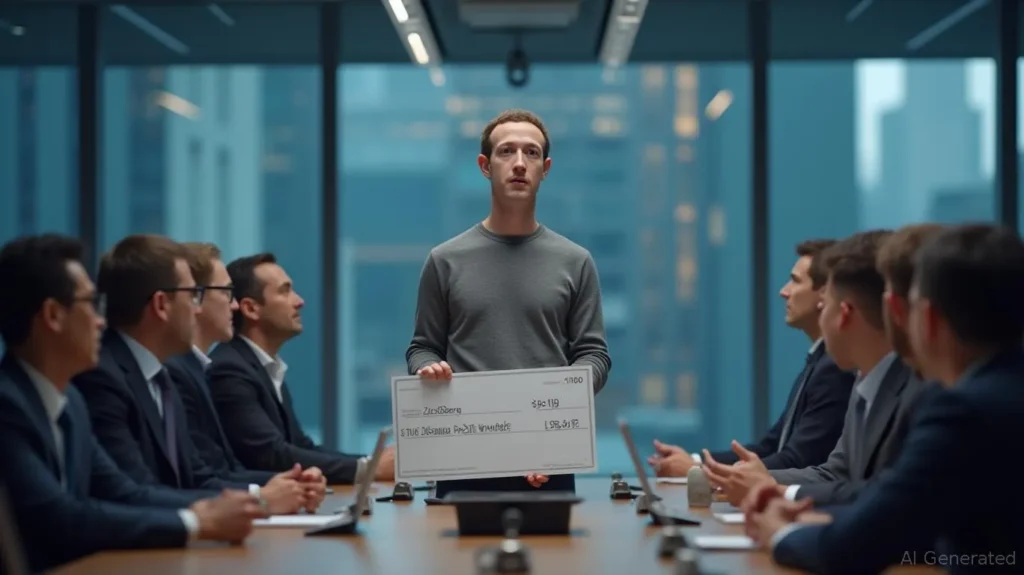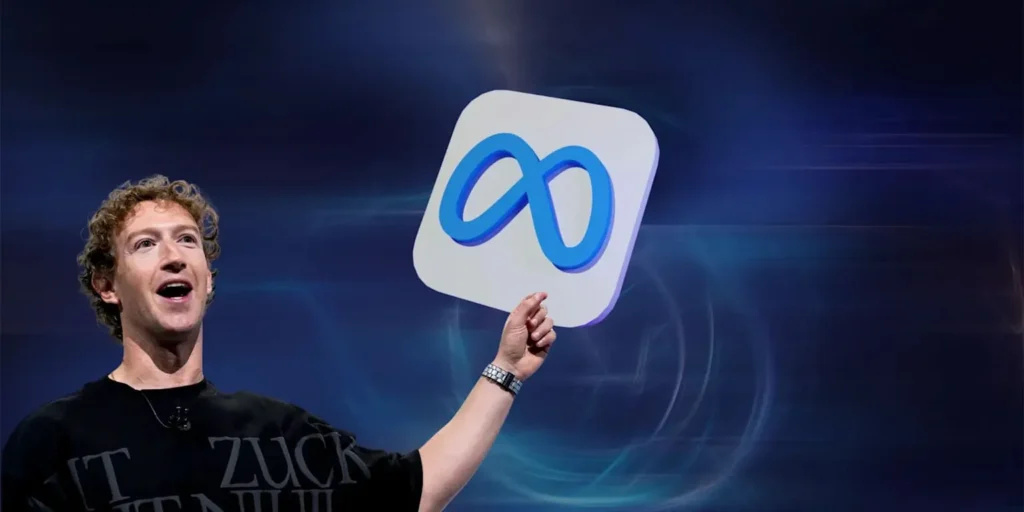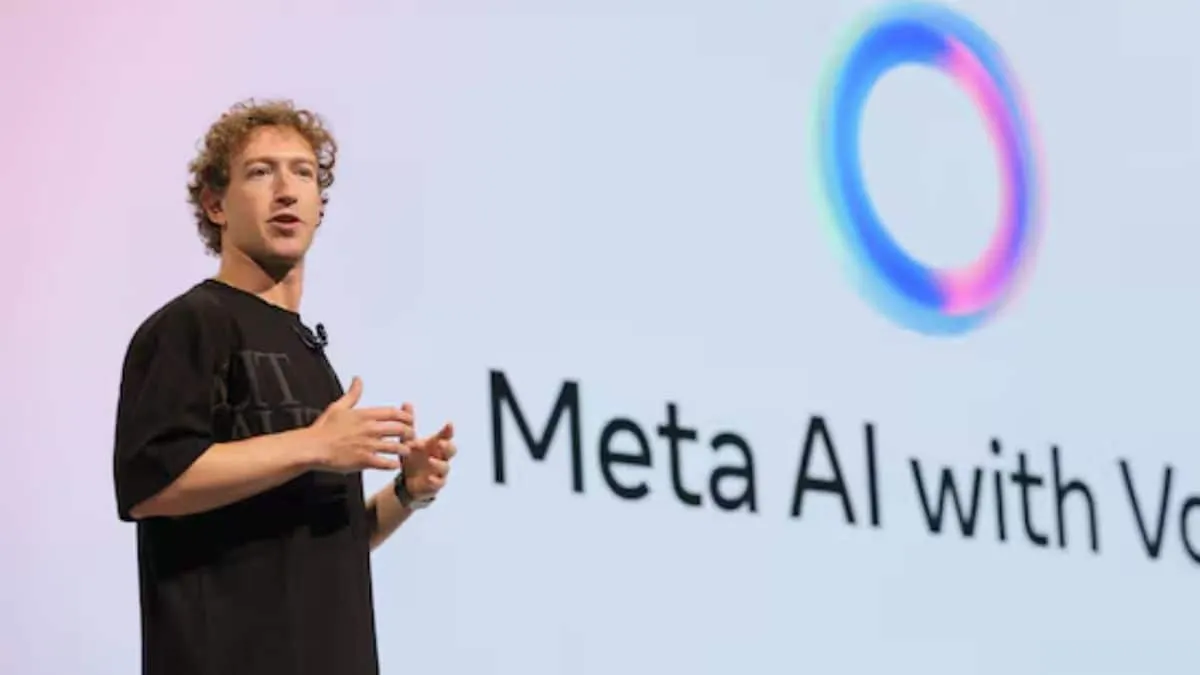In the ever-evolving race to dominate artificial intelligence, one name is back in bold headlines: Mark Zuckerberg. As Meta (formerly Facebook) intensifies its AI ambitions in 2025, it’s not just algorithms and GPUs making noise—it’s the cash. Meta has launched what insiders are calling “Zuck Bucks,” a controversial yet strategic initiative aimed at luring top AI talent away from rivals like OpenAI, Google DeepMind, and Anthropic.
Zuck Bucks, an internal nickname for the lucrative equity-heavy compensation packages Meta now offers, represent more than money—they’re a signal. A signal that Meta is all-in on AI, willing to go toe-to-toe in a multi-billion-dollar talent war that could define the future of the internet.
What Are Zuck Bucks?
“Zuck Bucks” isn’t a formal currency or crypto token. Instead, it’s tech industry slang referring to the aggressive stock-based incentive packages Meta is offering to AI researchers, engineers, and machine learning scientists. In many cases, these offers are exponentially higher than industry averages, with some senior-level AI specialists reportedly receiving:
- $10M–$25M in restricted stock units (RSUs)
- Sign-on bonuses north of $2M
- Annual refreshers to match inflation and retention pressure
Zuck Bucks are not literal dollars, but they are real in value and backed by Meta’s long-term belief in its own market power. And with Meta stock surging thanks to a rebound in ad revenue and AI-fueled innovation, the packages are more enticing than ever.

Why Meta Is Going All-In on AI
Mark Zuckerberg has always had an eye for paradigm-shifting technologies—from social networks to VR. Now, in 2025, AI is clearly Meta’s top priority.
🔍 Key Reasons for the Pivot:
- Relevance: Social media is maturing; AI is the new frontier.
- Monetization: AI can improve content creation, user behavior modeling, and ad targeting.
- Infrastructure: Meta owns one of the largest GPU clusters in the world.
- Vision: Zuckerberg wants Meta to be seen not just as a “Meta-verse” company, but as a foundational AI innovator.
Zuck Bucks are simply the currency of ambition, fueling Meta’s push to hire the very minds that are building the future of large language models, AGI (artificial general intelligence), and multimodal platforms.
Who Meta Is Targeting
The Zuck Bucks initiative is aimed at elite-tier AI talent, including:
- Researchers from OpenAI, Google DeepMind, Anthropic, and Mistral
- Engineers with knowledge of large language models (LLMs), such as Claude, GPT, Gemini, and LLaMA
- Former academic experts from institutions like Stanford, MIT, and Oxford
- Builders of open-source AI frameworks, especially those aligned with Meta’s open research strategy
Meta is particularly interested in mid-career researchers with 5–10 years of applied AI experience, as they offer both innovative edge and proven stability.
Internal Reaction and Company Culture Shifts
Internally, Meta’s Zuck Bucks initiative has been met with mixed reactions. While new AI hires are thrilled with sky-high compensation, some legacy employees—especially from the Reality Labs and social teams—are questioning equity distribution fairness.
To retain balance, Meta has implemented:
- AI-specific compensation bands
- Team-specific performance multipliers
- Fast-tracked promotions for AI staff working on critical infrastructure, such as LLaMA 4 and Meta’s in-house data centers
Culturally, the shift has also signaled a deprioritization of the metaverse—once Zuckerberg’s passion project—in favor of AI, foundation models, and open science.
How Zuck Bucks Compare to Rivals
💸 OpenAI:
- Backed by Microsoft, OpenAI offers hybrid compensation with capped profit-sharing
- Some engineers claim OpenAI’s RSUs are not as liquid as Meta’s public shares
- Retention relies on a mission-driven culture, not just money
💸 Google DeepMind:
- DeepMind offers high base salaries and research freedom
- Google’s bureaucracy makes aggressive offers slower to materialize
💸 Anthropic:
- Funded by Amazon and others
- Flat hierarchy, but equity remains more speculative compared to Meta’s mature stock
Meta, meanwhile, offers liquidity + innovation + infrastructure—a combination difficult to beat. Zuck Bucks packages also include custom GPU access, publication autonomy, and relocation perks for international hires.

Related Blog: U.S. Moves to Ban Chinese AI from Federal Use
The Projects Fueling the Talent Grab
Meta isn’t spending recklessly. The Zuck Bucks campaign is tied to specific AI projects and growth areas:
🧠 LLaMA 4 & 5
Meta’s flagship open-source LLMs are now rivaling GPT-4 in multilingual reasoning and code generation.
📹 AI-Powered Reels & Ads
Meta uses cutting-edge AI to enhance content moderation, video editing, and ad targeting.
👾 AI Avatars and Virtual Agents
Meta is developing WhatsApp business bots and LLM-powered NPCs for Horizon Worlds.
🌐 Multimodal Models
Combining video, text, and voice inputs, Meta aims to build the first trillion-parameter cross-modal model by 2026.
These ambitious plans require hundreds of top-tier engineers and researchers. Zuck Bucks are the bait.
Risks and Criticisms
While the talent war is thrilling, it’s not without consequences:
⚠️ Talent Drain from Academia
Universities are losing professors to corporate offers that exceed $5M+ compensation. This could stifle independent research.
⚠️ Equity-Heavy Risk
Zuck Bucks tie employee wealth to Meta’s stock. If the company faces a scandal or downturn, it could create mass attrition.
⚠️ Internal Tensions
Legacy employees feel left behind as Meta becomes more AI-centric. Morale management is a challenge.
⚠️ Open-Source vs Proprietary Conflict
While Meta claims to support open science, the line between public LLaMA models and private fine-tuned derivatives is getting blurry.
Market Impact: A Shift in AI Power
Meta’s aggressive hiring spree has already impacted the AI landscape:
- OpenAI lost key researchers to Meta’s AI Infra team.
- Startups struggle to compete for talent; many pivot to partnership models.
- Meta’s LLaMA 4 model has surpassed expectations, gaining academic and enterprise adoption.
By mid-2025, Meta is no longer viewed as a follower but as a front-runner in foundational AI, competing directly with OpenAI and Google.
The Long Game: What Zuck Wants
Mark Zuckerberg isn’t chasing short-term AI headlines. His vision involves:
- Dominating open-source AI infrastructure
- Creating a Meta-branded AGI ecosystem
- Embedding AI into every Meta product—from WhatsApp to Quest
- Building ethical guardrails through internal AI alignment teams
He believes whoever controls the best models will shape human-machine interaction for the next 50 years.
Zuck Bucks are simply the fuel for this mission.
FAQs About Zuck Bucks and Meta’s AI Strategy
Q1: Are Zuck Bucks an actual currency?
A: No, “Zuck Bucks” is a nickname for the generous equity packages Meta offers to AI hires. It’s not crypto or a digital currency.
Q2: How much can top AI engineers earn at Meta?
A: Senior AI engineers and researchers at Meta can earn $10M–$25M+ in total compensation, including RSUs, bonuses, and refreshers.
Q3: Why is Meta offering so much to AI talent?
A: To compete with companies like OpenAI, Google DeepMind, and Amazon-backed Anthropic. Meta views AI as central to its future growth.
Q4: What AI models is Meta developing?
A: Meta’s most notable models include LLaMA 4 and 5, focused on open-source large language modeling and multimodal capabilities.
Q5: Is Meta still focused on the Metaverse?
A: While Meta hasn’t abandoned the Metaverse, its primary focus has shifted to AI infrastructure and model development.
Conclusion: Zuck Bets Big, Again
Mark Zuckerberg has never shied away from risk, from acquiring Instagram to pivoting to the Metaverse. Now, in 2025, his boldest gamble yet is playing out in GPU-rich data centers and Zoom interviews with elite AI researchers.
“Zuck Bucks” may be a meme to some, but to Meta, it’s the cost of dominating AI’s next frontier. The only question left: will it pay off?




